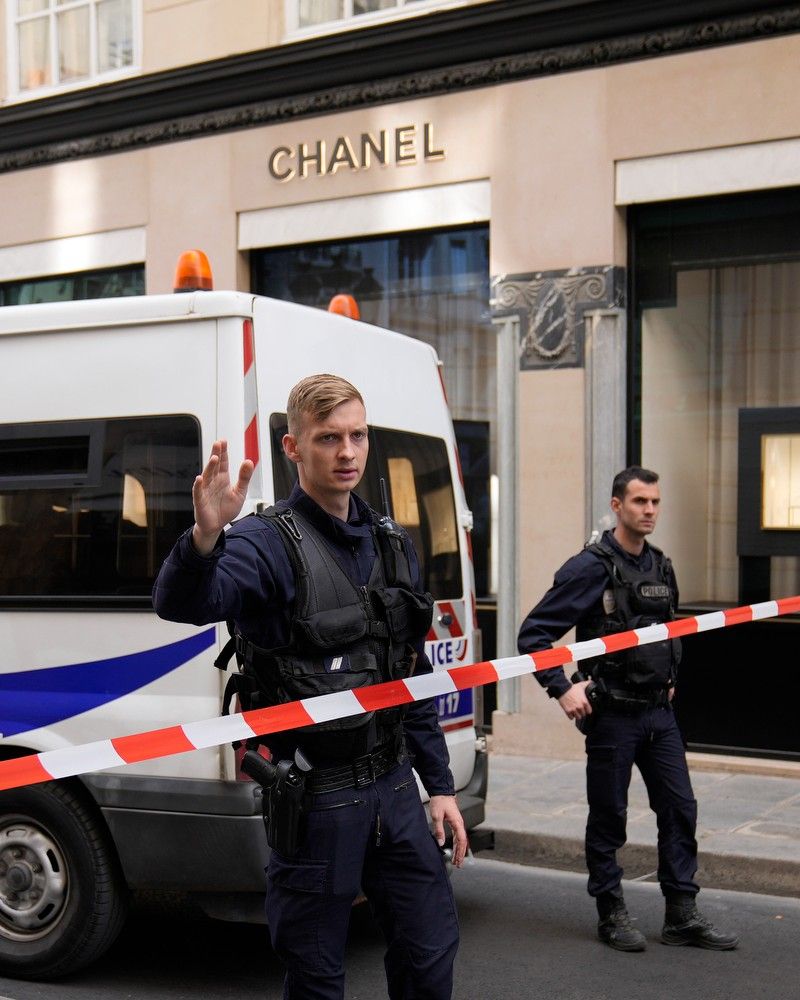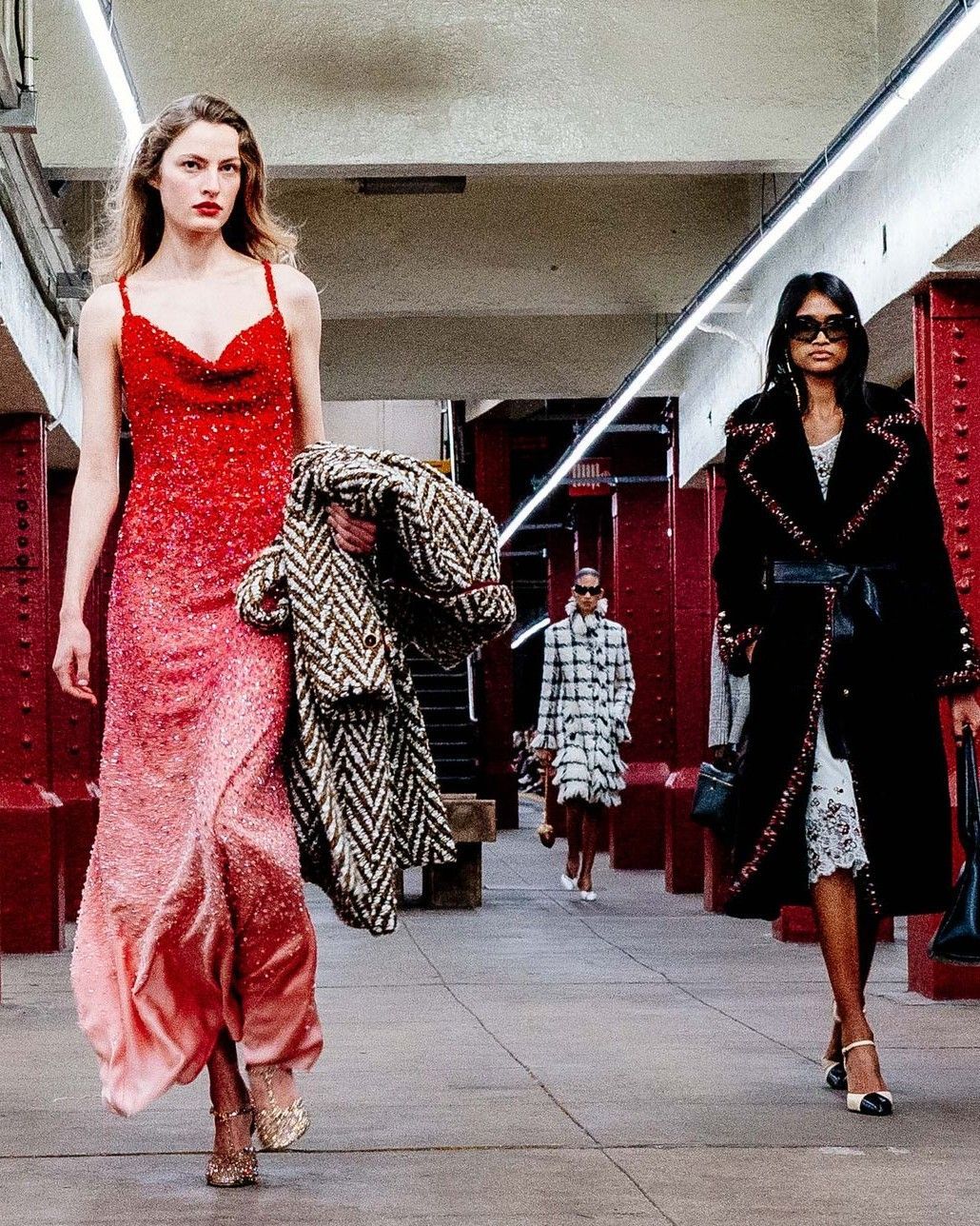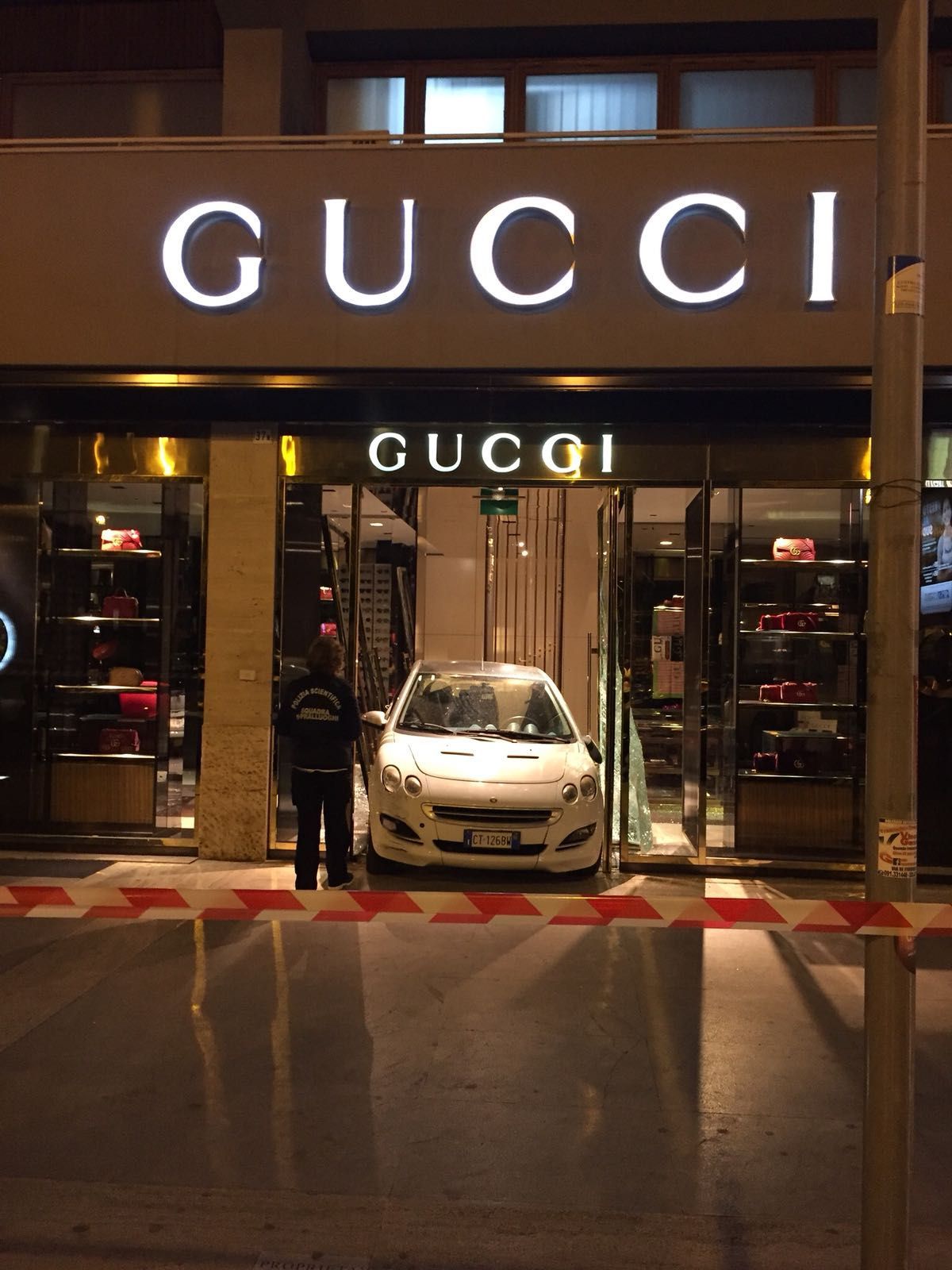
Fashion has a robbery problem Two hits in two days signal a disturbing trend that is not about how we dress
During the night between Saturday and Sunday, in Rome, a gang of robbers entered the Bulgari boutique on Via Condotti through a hole in the floor and stole jewelry worth around 500,000 euros. Not even twenty-four hours later, in Paris, in the middle of Avenue Montaigne, another gang of four thieves entered the Chanel boutique in a much less discreet manner (by smashing the window with a speeding car that was then set on fire) and then emptied showcases and displays, escaping with a loot estimated between six and ten million dollars. Also on Avenue Montaigne, another gang of thieves followed the same modus operandi on May 19th, this time robbing the Harry Winston jewelry store, causing damage worth millions of euros. In the last days of May, it took only 43 seconds for two masked men to assault a hotel boutique in Miami, stealing 1.8 million dollars in Hermès bags before fleeing; a few weeks earlier a Bottega Veneta boutique in Bellevue, USA, was robbed by a gang of four minors, while last February, the Gucci boutique in New York was robbed of 50,000 dollars worth of merchandise by armed robbers. In March, a gang of three Californian thieves was arrested after stealing 300,000 dollars worth of merchandise from various boutiques along the East Coast in a series of robberies. And this is without mentioning the pickpocketing cases of various Richard Mille watches in Milan, one of which even involved F1 driver Carlos Sainz. In short, does the fashion world have a problem with robbers?
À Paris, une boutique Chanel de la très chic avenue Montaigne a été attaquée à la voiture-bélier. La scène s’est déroulée lundi 10 juin, vers 5 heures du matin. #JT20H pic.twitter.com/o3M0WGjUjr
— Info France 2 (@infofrance2) June 10, 2024
Now, if the image of a masked robber smashing jewelry store windows is almost expected and banal, justifying the many and various security measures seen in stores dealing with jewelry or watches, it is perhaps new to hear of thieves stealing handbags, shoes, and clothes from a Chanel or Gucci boutique. This is because while jewelry can be melted down and precious stones removed from their settings, stolen clothes and bags not only result in bulky loot (especially if they come with original boxes), but if we imagine the fencing work, they could be seriously devalued if sold under the counter. Yet, these thefts could be part of international rings: when the Richard Mille thieves in Milan were arrested, the authorities tracked the stolen watch to China – the loot had practically traveled around the world. Sometimes the solution is simpler. When Prada employees discovered thefts in their workshop, they realized that a cleaning lady was stealing them to have them resold on major secondhand platforms by some relatives. Total value of the thefts: 300,000 euros. Nonetheless, reselling on Vinted seems a very slow process to get rid of large quantities of stolen goods. Especially considering how the recent thefts in Rome and Paris appear to be well-planned operations: in the Chanel theft case, for example, the thieves had two cars, one used as a battering ram and set on fire; the other was a getaway vehicle.
Be that as it may, this large number of organized robberies at various levels of preparation highlights that criminals have realized that behind every boutique or window in luxury districts like Montenapoleone hides a warehouse full of extremely expensive products, highly sought after and thus easily “disposed of” through more or less traceable channels. But above all, fashion brands are perfect victims because, simply, they are more prepared for shoplifters than robbers, armed or not. Many Montenapoleone warehouses, though relatively secure, have practically only one or two doors separating them from the outside world, and inside them, there are rooms full of potential loot: a single bag can be resold, even at a discount, for several thousand euros. Anyway, the issue of security already became hot last year when, before the Balmain show, 50 pieces were stolen just before the show with a sort of ambush in Paris, forcing the brand's team to rebuild everything before the actual show. The pieces have not yet been recovered, nor are the details of a theft clear, the motive of which could be sabotage or the sale of those unique pieces to some private collector.
Also last year, a Communication Specialist study published in Forbes did not paint an ambiguous picture of the issue. Considering senior executives of luxury stores with sales of 3.1 billion dollars across four continents (Australia was not included), 62% of the executives said they expected an increase in crimes, but 31% anticipated a “dramatic increase” in thefts. And although 24% considered security excellent, 62% only good, and the remaining percentage average, it was estimated that security expenses would increase by between 28% and 40%, a sure reflection of the measures brands are adopting in a world where money is scarce and thieves are not.














































